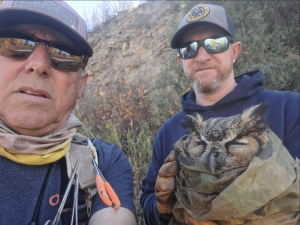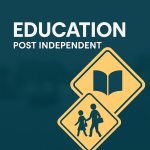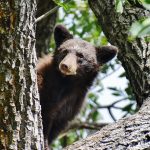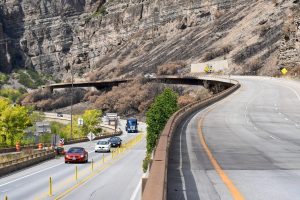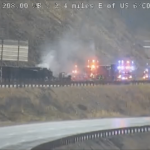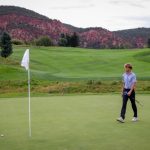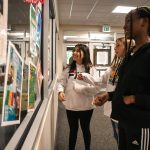Edwards man rescues owl in peril from the Eagle River
The great horned owl, named Raoul, is being treated at an animal hospital for a broken wing and water in its lungs
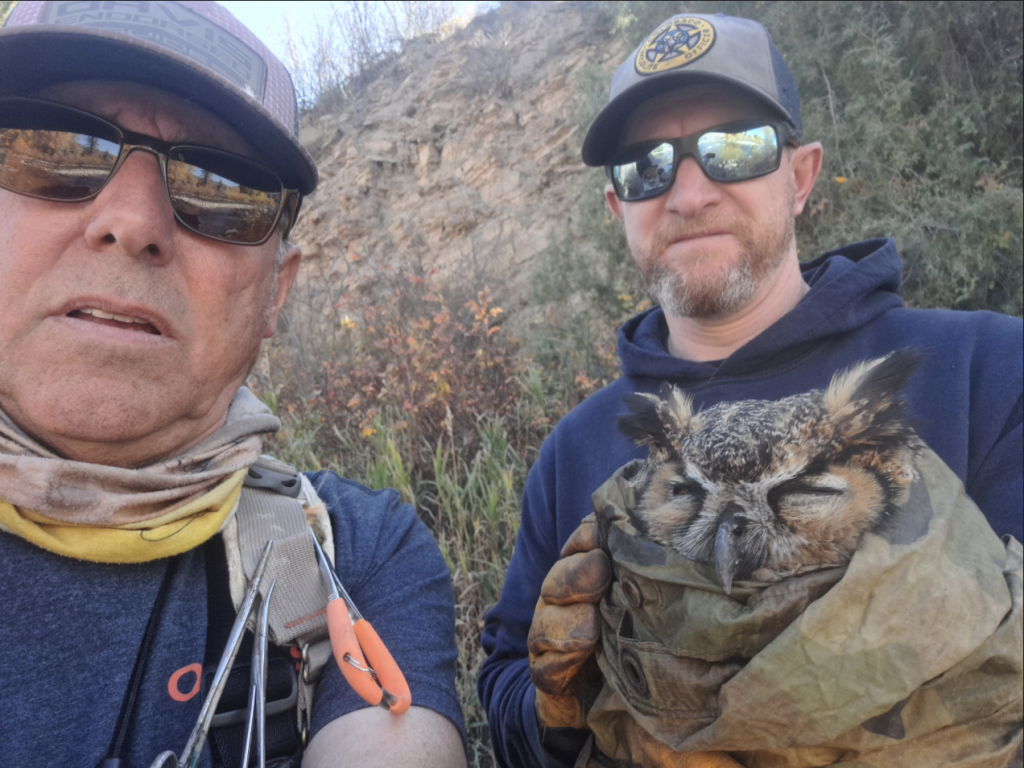
Darryl Dagen/Courtesy photo
Last Wednesday was not a typical day at work for Edwards resident Darryl Dagen.
A fly-fishing guide of 21 years, Dagen was fishing with a client on the Eagle River when he spotted something out of the ordinary on a rock in the middle of the river.
“At first, I thought it was a tumbleweed that got stuck out there and had a bunch of leaves on it,” Dagen said. “Then I realized it was a horned owl.”
“He was sitting on this rock, as big as a beach ball, with his feathers all spread out and everything. It looked like he was trying to dry himself off,” Dagen said.
Dagen’s client noticed a red-tailed hawk was watching the owl from above.
“We think that this red-tailed hawk didn’t like the owl being in its territory or something, hit it, broke its wing and knocked it out of the air into the river,” Dagen said.
As Dagen and his client watched, the owl “got nervous, and tried to jump off the rock, and it started struggling in the water,” Dagen said. “Then I thought, that thing is in trouble. It tried to fly and it couldn’t fly.”
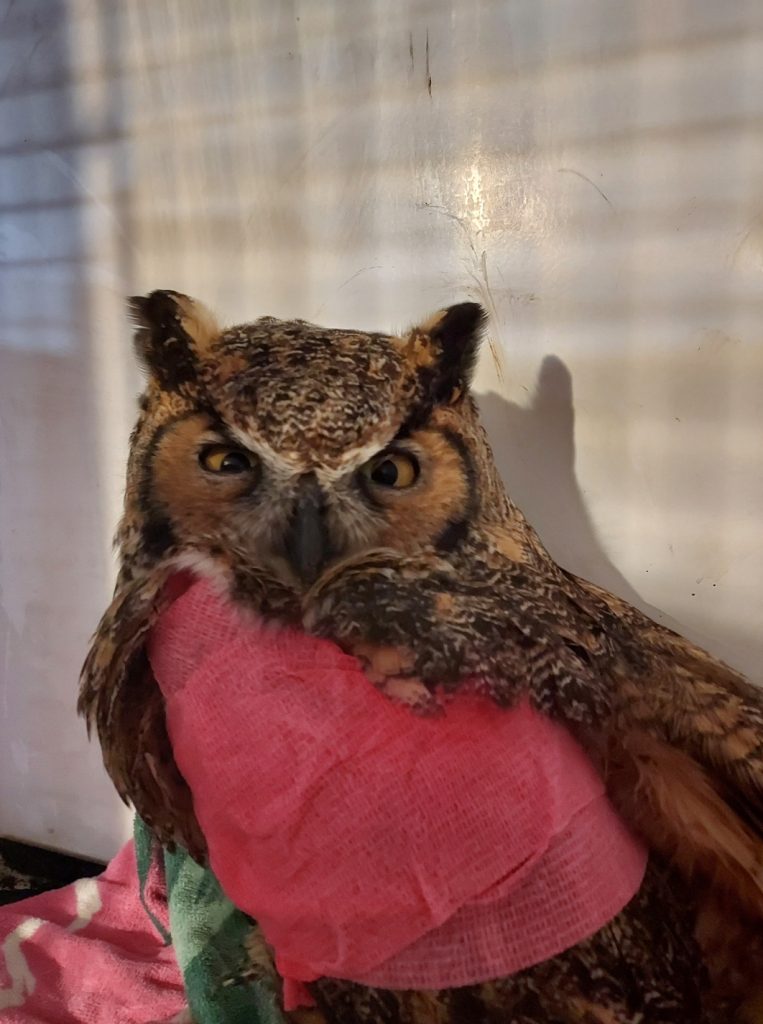
Dagen launched into action, wading into the river to reach the owl. “When I got to the owl, he was still struggling. His head was underwater, and I could see it had been underwater for a while,” Dagen said. “And I’m like, this thing is drowning.”
Dagen scooped up the owl in his fishing net and brought it to the bank, where he dried it off with his shirt.
“I think he was in shock or something, but he really didn’t struggle or give me a hard time,” Dagen said. “He was just sitting there blinking at me.”
Dagen said he knew right away that the owl was injured, with a broken left wing.
On the bank, he called Devin Duval, the district wildlife manager for Colorado Parks and Wildlife, who picked up the owl and brought it to a specialized veterinarian.
What comes next for the owl
The owl, identified by a veterinarian as a year-old male great horned owl, is named Raoul.
Dagen called the animal hospital for an update and heard that the veterinarian had isolated Raoul’s wing to try to reduce the swelling and that the owl had water in its lungs.
“The owl is not completely out of the woods yet because they are worried about it getting pneumonia,” Dagen said.
If the owl makes a full recovery, it will be up for release early next summer. If the wing is too badly damaged to heal, the bird may need to be euthanized.
Dagen said he offered to take care of the bird if it was deemed too injured to return to the wild.
“I said, ‘Listen, give it to me, I’ll feed it for the rest of its life so it doesn’t have to fly,'” he said. “And they said, ‘That would be illegal.'”
“So hopefully he’ll be OK. They said if he does make it that and they’re able to repair its wing and he can be released, they said that they would call me and I could take it back to the spot where we rescued it and let it loose next year,” Dagen said.
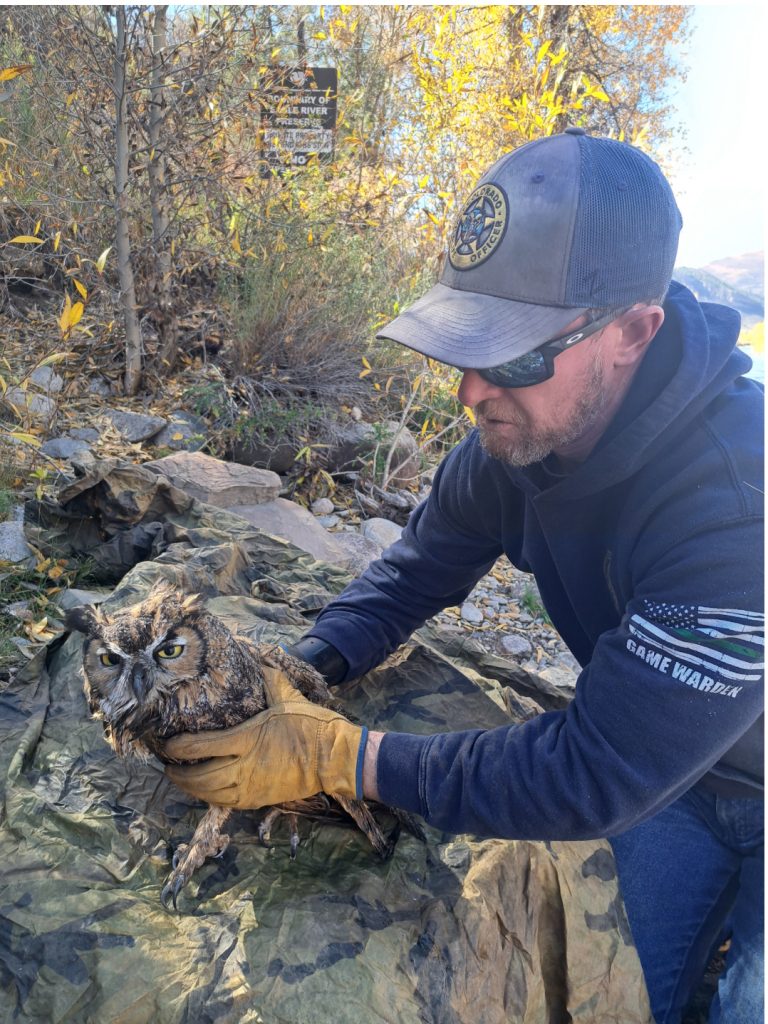
‘Why should I rescue one predator from another?’
As a longtime fishing guide and outdoorsman, Dagen is familiar with getting up close and personal with wildlife, from elk to raptors.
This was not the first time Dagen has rescued an animal — it was not even his first owl.
“I rescued a young horned owl, I’d say eight or nine years ago,” he said. “I rescued a baby goose one time on the Eagle River. I rescued a red-tailed hawk one time when I was hunting. I think it’s good to be interested in how important raptors are in our river life and in our ecology here.”
The experience of rescuing Raoul after he was (presumably) injured by a fellow raptor made Dagen think: “Why should I rescue one predator from another predator? Why should I interfere with that?”
He found two reasons to step in: To preserve biodiversity and to encourage each predator to hunt at its skill level.
“I feel like the more diversity there is in the predator world, they’re less likely, if there’s a disease that happens among one species … to get wiped out,” Dagen said.
“In terms of the skill and power … the owl is much slower, more of a disadvantaged predator” compared to the red-tailed hawk,” Dagen said. “I feel like if I helped that owl, I’m forcing that other predator to go higher and hunt game that is more difficult, that is more matched to its skill level.”

Support Local Journalism

Support Local Journalism
Readers around Glenwood Springs and Garfield County make the Post Independent’s work possible. Your financial contribution supports our efforts to deliver quality, locally relevant journalism.
Now more than ever, your support is critical to help us keep our community informed about the evolving coronavirus pandemic and the impact it is having locally. Every contribution, however large or small, will make a difference.
Each donation will be used exclusively for the development and creation of increased news coverage.
